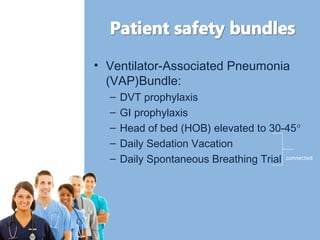
**Non-Ventilator Hospital-Acquired Pneumonia (NVHAP): A Neglected Health Hazard**
Infection rates acquired in hospitals are a significant challenge for healthcare systems worldwide. Among these infections, **hospital-acquired pneumonia (HAP)** stands out as one of the most prevalent and lethal risks to patient well-being. While ventilator-associated pneumonia (VAP) has received considerable focus and prevention efforts, its lesser-known counterpart, **non-ventilator hospital-acquired pneumonia (NVHAP)**, silently impacts many hospitalized individuals.
### Grasping NVHAP
In contrast to VAP, which arises in intubated patients, NVHAP occurs in non-ventilated patients during their hospital stay. Often eclipsed by other reported hospital-acquired infections (HAIs)—such as central-line-associated bloodstream infections (CLABSIs) or catheter-associated urinary tract infections (CAUTIs)—NVHAP is not yet a required metric in many healthcare facilities. Nevertheless, research indicates that NVHAP accounts for nearly **65% of all hospital-acquired pneumonia instances** and poses serious threats to both patients and healthcare systems.
### Reasons NVHAP Is Overlooked
The absence of compulsory reporting for NVHAP has kept it outside the awareness of hospital administration and public health dialogues. Healthcare organizations commonly concentrate on safety metrics linked to compliance and penalties, allowing NVHAP to remain underappreciated as a preventable issue. This negligence continues despite NVHAP’s **elevated mortality rates** and its association with extended patient stays, complications, and increased healthcare expenses.
### Causes and Risk Factors of NVHAP
NVHAP often arises due to preventable circumstances within the hospital setting. A primary source is where few expect it: **the oral cavity**. During a hospital stay, a patient’s oral microbiome can dramatically shift within just 48 hours. Harmful bacteria can proliferate and may then be aspirated into the lungs, leading to pneumonia.
Patients are especially at risk due to factors such as:
– Immobility or lengthy bed rest.
– Inadequate oral hygiene.
– Vulnerabilities related to age (especially in older adults).
– Pre-existing health issues like **heart failure**, **chronic obstructive pulmonary disease (COPD)**, or **cancer**.
Even though certain demographics may carry increased risks, **any patient**, by virtue of being hospitalized and remaining inactive for prolonged durations, is at risk for NVHAP.
### The Severe Impact of NVHAP
The ramifications of NVHAP can be drastic and extensive:
– **Extended Hospital Admissions**: NVHAP can lead to hospital stays that are prolonged by as many as **15 extra days**.
– **Increased Risk of Complications**: Patients experience a heightened risk for falls, pressure ulcers, and antibiotic-resistant infections, in addition to a greater chance of developing hospital-acquired sepsis.
– **Complicating Post-Hospital Recovery**: Many survivors of NVHAP are required to be moved to rehabilitation or assisted-living facilities, imposing financial, emotional, and physical stress on families.
The economic impact of NVHAP is considerable, with each instance estimated to cost healthcare institutions between **$28,000 and $40,000 per patient**, underscoring the urgent need for prevention strategies.
### Prevention Is Essential—and It’s Manageable
One of NVHAP’s most remarkable—and encouraging—realities is that its prevention is both **clear-cut** and **incredibly effective**. Prevention strategies can be smoothly incorporated into daily hospital practices without the need for complex procedures or expensive apparatus.
Crucial methods for NVHAP prevention encompass:
1. **Oral Care**: Consistent and effective oral hygiene diminishes the growth of harmful bacteria in the mouth, preventing their potential journey to the lungs. This remains foundational for prevention and can help address the issue of NVHAP at its origin.
2. **Raising the Head of the Bed**: Patients should be positioned with the head of the bed elevated to lessen the likelihood of aspirating bacteria or stomach contents into the lungs.
3. **Encouraging Mobility**: Urging patients to rise from bed and enhance their movement can boost overall physical function and help lower lung-related complications.
4. **Bedside Swallow Screening**: These assessments can identify susceptible individuals and inform subsequent preventive actions.
### Obstacles to Effective Prevention
Despite the straightforward nature of these measures, various obstacles impede their regular execution:
– **Staffing Issues**: Frontline healthcare personnel, including nurses and nursing aides, frequently contend with heavy workloads, making it challenging to prioritize NVHAP prevention tactics.
– **Insufficient Education**: Numerous healthcare workers and patients regard oral care as merely a comfort measure rather than a crucial intervention essential to a patient’s survival.
– **Patient Reluctance**: Some patients may decline oral hygiene or physical activity due to unawareness of the associated dangers, including NVHAP.
### A Call for Cultural and Leadership